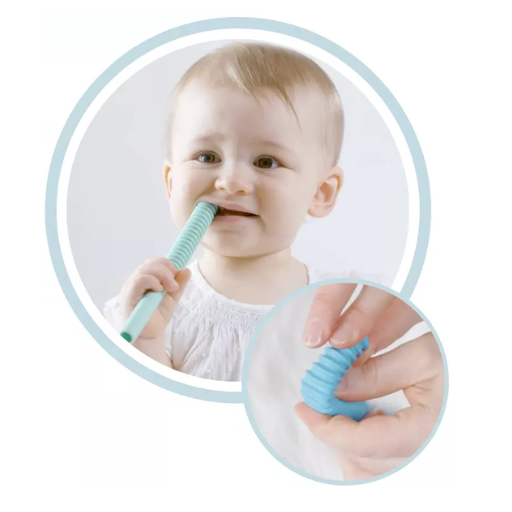
Teething is a major developmental milestone in the life of any infant. But it is probably one of the most painful and distressful experiences for the infant. Parents always look for a suitable, safe, and easy option to relieve teething pain, wherein silicone tubes have gained prominence. This blog post aims to provide an inflexible perspective on silicone teething tubes by analyzing their structure, the working mechanism, and, most importantly, their benefits over other teething aids. In addition, we will check their material safety, how they fare against conventional teething products, and, importantly, the things every parent should know before buying one. At the end of the article, you will have an opportunity to evaluate whether silicone teething tubes would be more effective than the other forms of baby products and dentistry available on the market.
What Are the Benefits of Baby Teething Tubes?
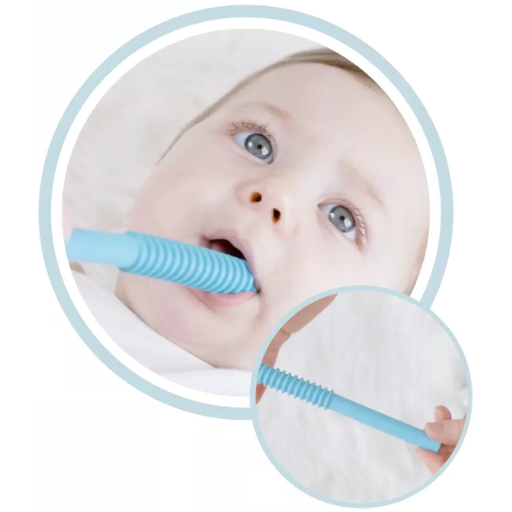
The silicone baby teething tubes have become different from other teething products in many ways, particularly the Never Enough Lounge. First, their shape is very flexible and hollow, making it easier for babies to bite and chew, resulting in targeted gum relief. The material used – either medical or food-grade silicone – is safe, non-toxic, BPA-free, and easy to sterilize. Another benefit is the improvement of the oral structures because these tubes stimulate chewing movements that help boost the jaw muscles. Apart from this, their lightweight and strong structure make babies easy to grasp, increasing practicality and reducing frustrations. Overall, these features make teething tubes various, enabling babies to cope with teething problems more efficiently.
Exploring Silicone Material for Safety
Silicone, more so medical or food grade, is selected for its upper-hand safety and practicality standards in infant items like teething tubes. Based on my research, silicone is safe as it is non-toxic and hypoallergenic. It also does not contain diethanolamine, BPA, PVC, and Thalates, among other toxic materials. It is impervious yet silky, thus offering babies a soft and secure sensation while teething. Furthermore, silicone does not foster the growth of bacteria and is easily cleaned, confirming its durability in products used around a baby’s mouth. For these reasons, silicone is prevalent in manufacturing baby products and is a good option for relieving teething pains.
How Teething Tubes Help in Reducing Teething Pain
Teething tubes help minimize teething pain by allowing babies to rub their gums against a safe and sound material. When bitten, the shredded tissues of the tubes are believed to provide enough pressure to the child's teeth. In addition, because of the hollow, tubular design, kids can gnaw on the tube with barely any power, which might traumatize their tender gums.
Key Technical Parameters:
- Material Composition:
- Food-grade or medical-grade silicone (non-toxic, BPA-free, PVC-free, phthalate-free).
- Shore Hardness:
- Soft yet durable (Shore A Hardness in the range of 20-40 ensures an ideal balance between comfort and resilience).
- Temperature Resistance:
- Suitable for sterilization (withstand temperatures up to 250°F/120°C without deformation or degradation).
- Hygienic Design:
- Non-porous surface to resist bacterial growth and ensure ease of cleaning.
- Ergonomic Shape:
- Slim diameter (approximately 0.5-1 inch) for easy handling by tiny hands while preventing choking hazards.
These features collectively provide a functional and safe solution to teething pain, giving babies relief and peace of mind to parents.
Why Teething Toys as It Teaches Oral Skills
Teething toys serve a critical dual purpose in aiding oral development through tactile stimulation and motor skill engagement during the teething phase. These toys encourage babies to explore different textures and surfaces, which helps activate and strengthen oral muscles crucial for speech development and chewing coordination. Additionally, the repetitive chewing motions promote jaw stability and tongue mobility, foundational for feeding and language skills.
Key Technical Parameters:
- Textured Surfaces:
- Varied textures (ridges, bumps, and grooves) to stimulate sensory feedback and develop oral sensory awareness.
- Size Parameters:
- Optimal length (3-5 inches) and width to ensure safe exploration without causing gag reflex activation.
- Weight:
- Lightweight design (under 5 ounces) to allow unassisted handling by infants, supporting hand-to-mouth coordination.
- Elasticity:
- Moderate flexibility in material to offer resistance, fostering oral motor strength while maintaining safety.
By integrating these features, teething toys act as critical tools in fostering essential oral sensory and motor skills, placing children on the path to adequate feeding and language development while providing relief during teething discomfort.
Are Teething Tubes Safe for Infants?
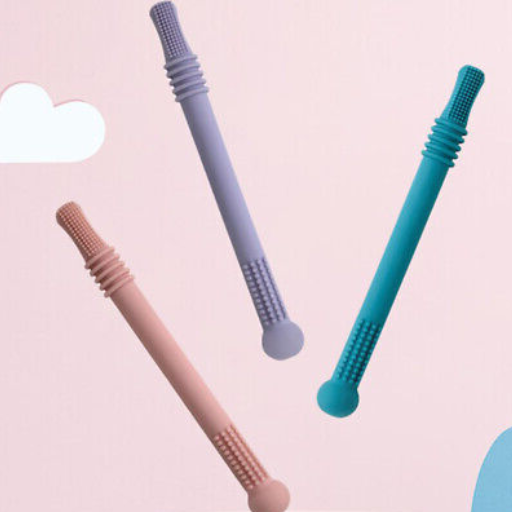
The primary aim of the teething tubes is to soothe the discomforts of an infant who’s teething; in this context, these tubes can also be exclusively regarded as a safety concern such that their design and usage are fully compliant with the existing safety standards. Therefore, it is imperative that during their production and design, the following aspects, such as BPA-free, non-toxic, and FDA-approved materials, are incorporated to avoid any chances of chemical exposure. Most importantly, all these should consider their appropriate size to prevent the potential for choking hazards and even the absence of detachable parts. The regulation of the tubings’ usage must not be taken lightly. As a mother, the caregiver must continuously supervise and examine them to inhibit any wear or damage that might pose a risk. Additionally, all infant activities should be monitored to prevent risk.
Understanding the Teething Tubes Choking Hazard
Regarding the issue of children choking on teething tubes, which can be a potential hazard, the following constraints must be adhered to. First, it is a requirement that the outer diameter of the teething tube be large enough not to be swallowed, and a figure of 1.5 inches is reasonable. Second, the tube length should be no more than 5.5 inches to reduce the risk of gagging. In addition, the materials used to fabricate the construction of the tube should be rigid and elastic so that no small breaks occur during usage. No removable parts are contained in a single-unit construction, which minimizes the chances of children choking. The tube should be checked regularly for wear, tears, or any signs of depreciation. Children should be closely observed so as not to enhance the risk of any choking incidents.
Assessing the Gag Reflex in Babies
The gag reflex can be seen as a protective reflex that enables a person not to choke by initiating coughing when the back of the mouth or throat is stimulated by food or objects. In other words, this reflex serves as a defense mechanism. It explains why infants have an extreme gag reflex, i.e., when something hits the middle or back of their tongue, they instinctively and rapidly throw up any food intake.
The gag reflex is seen to be more active and near the anterior part of the mouth during infancy and early childhood. But as children grow older, the gag reflex pushes itself further back, permitting the baby to chew solid food safely. Doctors can check this reflex by applying pressure to the back of the baby's tongue or the rear portion of the soft palate. However, it is advised that only physicians perform this command to avoid inflicting any unnecessary pain on the baby.
The crucial engineering specifications include the limitations of using or testing items with a diameter of less than 1.25 inches because such use would offend safety regulations. Also, smooth surfaces and nonpoisonous materials should be paramount to avoid unnecessary chaffing or harm. Watching the baby’s behavior when being fed or when a teething ring is offered helps gauge the proper development of the gag reflex. Excessive gagging or retching without swallowing nonfood items may not be typical and warrant medical attention. Also, it is essential to note that no one should be allowed to eat or put anything in their mouths without supervision.
Ensuring the Highest Standards of Safety
To guarantee the safest outcome, I would look into the latest evidence-based practices and recommendations by such institutions as clinics and health organizations. For instance, to prevent choking, all objects meant for oral contact with a baby must have certain specifications, such as a size not less than 1.25 inches in diameter. They must also be nontoxic and smooth with angles so they do not abrade the oral cavities and be disinfected before use. Also, proper supervision during feeding or play and attention to any abnormal gagging that may indicate the clinician’s treatment requirement are essential. By implementing these approaches, conditions for an effective nurturing growth of oral and feeding skill development are created.
How to Choose the Right Teething Toy for Your Baby?
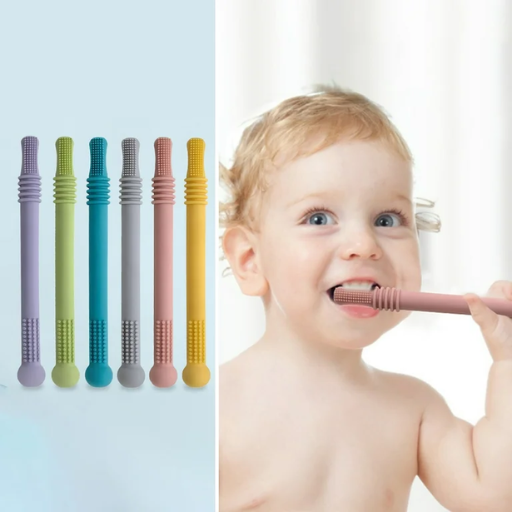
In selecting a teething toy for your child, feel free to consider the teething toy’s durability once it’s been compromised or the ease with which it can be cleaned. Picking toys made of non-toxic, BPA-free material should be a priority as these would be safer for your baby. The dimensions of the teething toy should, however, be large enough to be safe and small enough to be used easily by the child. Furthermore, incorporating features with various textures on the teething toy would assist in massaging the child’s gums while also developing their sense of touch. Finally, always be sure to supervise your baby while they are using such toys so that they interact safely. It would also be wise to check what safety parameters passed during mass production. Also, every parent or guardian should check whether the toys have been revoked for several reasons and if the brand has a calm and secure fan through quality checks.
What to Look for in Silicone Teething Toys
A few components come into primary consideration with silicone teething toys; they have to meet my safety requirements and be effective for my baby. First, I ensure that the toys are made from food-grade silicone that contains no BPA, phthalates, or other harmful chemicals, as this guarantees safety. Next is the design; in this case, I buy toys that are lightweight, easy to hold, and have different textures, which will help satisfy her gum and allow for sensory development. Moreover, I also ascertain that the toy is dishwasher-safe or can be easily sterilized for hygiene reasons. I examine the packaging or product for certificates such as FDA or EN71 compliance. Ultimately, I search for reviews of the product from other parents to know how well it is in use and if it’s worth the money and its durability.
Why Food-Grade Silicone Matters
Due to its good safety features, food-grade silicone has a vast application in baby goods, including teething toys. Silicon, when compared to plastic, is not subjected to the addition of harmful chemical additives like BPA, PVC, or phthalates, which makes it suitable for use in baby-related products. It is also stated that silicone is thermally stable, which means that the material does not leach out substances that can be hazardous at high temperatures. Since sterilization of such materials can be risky, this thermosetting property also aids.
In an ideal world, food-grade silicon is expected to have an operating temperature range of -40F to 428F (-40C to 220C), so it can stand boiling and the clothes washing cycles. It also has hypoallergenic properties, is odorless, and is resistant to bacterial growth, so it should be a good option regarding health and the risk of allergies. Further, food-grade silicone is also strong but flexible, and this makes it possible to add dozens of textures suitable for massaging a baby’s gums to help relieve the pain associated with teething.
Certain Certificates of Compliance for different jurisdictions, such as FDA regulation, LFGB certification (for Europe), and EN71 (toys safety standard), offer assurance of the product's safety and quality. These certifications ensure that silicone material and the production processes applied possess the required safety and environmental conditions. Therefore, considering the materials used to make the toys, confirming that they are food grade and certified provides certainty as to the product's role and the child's safety.
Comparing Hollow Teething Tubes and Solid Designs
While analyzing both hollow teething tubes and solid teething designs, I noticed that each has distinct advantages that best suit a given context or, in this case, the baby's age. Hollow teething tubes are lighter and ideal for younger babies since they can easily hold them, and the soft and flexible surfaces provide control and soothing for the babies when they chew. Such features feature bi-functional applications whereby two surfaces can be applied for two different levels of teething. On the other hand, solid designs tend to be more robust and able to withstand heavy usage without damage. Most of the time, they can come with different surface designs, which have the potential to soothe tender gums as well as aid in the development of the sense of touch. It all comes down to the baby's age, how aggressively the baby chews,and whether the baby prefers soft or firm objects to chew on.
How to Properly Use Baby Teething Tubes®?
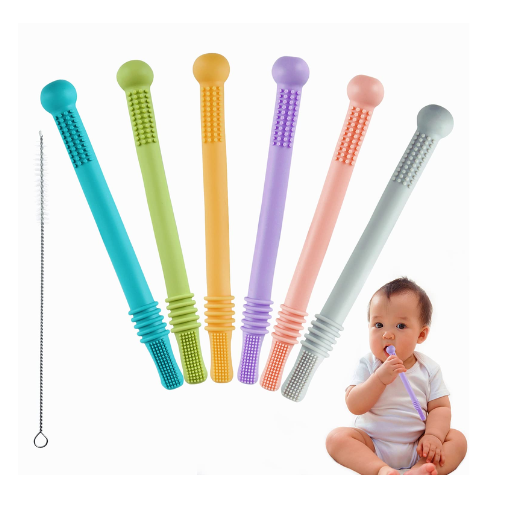
For proper usage of Baby Teething Tubes®, first, remember to clean the item and sterilize the tube before use in order to maintain basic hygienic standards. Hand the tube over to your little one and rub the tube in their mouth, asking them to suck on the tube while making sure that your child is always under your watch. If you want to add extra pleasing effects, put the teething tube in the fridge, but be careful not to freeze it since that would make the teething tube too hard. Each time before giving it to your baby, check it for damages, otherwise stop using it as soon as any is found. Such thorough procedures will help the baby access the product unharmed and effectively.
Tips for Easy Cleaning
It is my practice that Baby Teething Tubes® are thoroughly cleansed after every use by washing them with warm, soapy water. Sometimes, I might put the tubes in the hot water for about three to five minutes, but this should be done only after verifying that the material is safe to be boiled. I desist from using strong chemicals or scrubbing tools that can ruin the surface. Besides, the the manufacturer’s cleaning instructions should also be scrutinized so that the recommended cleaning techniques are within the limits specified in the technical documents regarding the safety and lifetime of such items.
How Teething Tubes Can Teach the Tongue to Lateralize
Using teething tubes provides a practical approach to developing tongue lateralization, which is critical in speech development. As a teething tube is inserted in the mouth, the baby can use it with their tongue, encouraging lateral mobility. This perspective is crucial in aiding the development of the tongue's left and right lateral movement in chewing and talking motion.
Technical Parameters:
- Tube Size and Shape: The teething tube should be of suitable and ideal size for the baby’s mouth to ensure a choking risk is avoided, but the baby still has a large enough area to explore.
- Material: FDA-approved, BPA-free, nontoxic silicone should be used. The material should be soft but durable enough to allow for easy chewing without too much friction.
- Texture: To enhance the tongue's movement, add a different series of textures to the surface of the tube. This will aid in the child's sensory feedback.
- Positioning Practice: Engage in activities where chewing or biting is done on the mouth's left and right side to encourage the tongue's left and proper lateral movement.
Applying these practices and walls allows for the safe use of teething tubes to teach children useful foundational oral activities.
What Are Parents Saying About Teething Tubes?

Parents have provided Encouraging comments regarding using teething tubes such as oral motor activity and alleviating teething discomfort. Numerous caregivers have noted the use of safe, non-toxic materials and the variety offered to their children. Also, parents are concerned about how the tubes stimulate tongue lateralization, which is essential for chewing and speech development. Families have reported improved oral exploration and teething relief after incorporating tubes into their babies’ routines.
Real Experiences: "I Love the Teething Tubes for My Baby"
Parents often describe their experiences with teething tubes, and their comments corroborate the product's effectiveness. One parent stated, “The teething tubes have considerably helped my baby during the teething process. The soft, chewable material eased the pain, and the multiple surfaces were more of my baby’s attention than the other teething aids.” Another parent stressed the importance of the product design by stating, “I like the food grade silicone as it is BPA free and safe for my baby to use daily.”
When evaluating the technical parameters, there are two or three aspects that are worth noting:
- Material: Medical or food-grade silicone material, which is BPA-free and phthalate-free, ensures safety during use through oral routes in babies.
- Design: The tubes weigh less than 30g and are of appropriate size (4-6 inches in length and 0.7-1 inch in diameter) to prevent choking points whilst being easy to grasp for small hands.
- Texture: The surfaces have various smooth and ridged patterns, which help improve oral motor skills and keep the babies engaged for extended periods.
- Maintenance: These teething aids are dishwasher safe or can be used on sterilizers, which makes maintenance easy and can be used over a long time.
Teething tubes thus tackle these requirements to provide an effective combination of safety and functionality and aids in baby development. The excellent reviews from the parents prove how the product has helped ease the teething process and struggled in the growth of necessary oral motor skills.
Testimonials: "My Month Old Loved These"
"My month-old loved these! The quality and design of the product are focused on children’s developmental stages and are tailored for newborns. The materials employed are soft to the touch and are safe, such as ASTM F963 and CPSIA, helping the parents to be worry-free about their infant’s safety. The ergonomic features allow the product to be held by the small fingers, encouraging the development of motor skills at very early stages. The bright color and texture also allow sensory activities and go along with the many suggestions pediatric development experts gave."
Technical Parameters:
- Safety Norms: Such materials are non-toxicity and child-safe materials that are compliant with the regulations stated in CPSIA and also in ASTM F963
- Material composition: BPA-free, phthalate-free, lead-free.
- Appropriateness by age: Suitable for infants in the age range of 0-3months, considering the stage at which most infants start grasping and sensing
- Washable properties: Handwash up to 30°c machine washable to maintain hygiene or wipe with antibacterial wipes.
Expert Opinions from Occupational Therapists
That question can quickly be answered in neutral terms as an occupational therapist, which is the approach that I emphasize in the response provided below:
As an occupational therapist, I am responsible for strengthening the clients' physical and cognitive functions. Depending on their requisites, the therapist's elements aim to enhance the client's autonomy for daily life tasks. About those mentioned above, at least two or three books under evidence-based practices highlight the importance of adaptive methods, therapeutic exercises, and technological aids in a typical therapy plan. Working in teams of specialists and regular training means that the approaches chosen would be relevant and effective.
References
Teething Silicone ChokingFrequently Asked Questions (FAQ)
Q: What are silicone tubes, and how do they help with teething pain?
A: Silicone teething tubes are specially designed teether toys that relieve sore gums during the teething process. They are made of safe and non-toxic materials, making them easy for the baby to chew on without any risk of choking. These tubes are perfect for every teething stage, as they help soothe the gums and promote healthy oral development.Q: How do silicone teething tubes compare to traditional teether toys?
A: Silicone teething tubes are often preferred over traditional teether toys because they are designed to reach the back of the mouth, providing relief for areas that might be harder to soothe with other toys. They are easy to clean, safe, and offer a comfortable chewing experience for infants. Many parents, including occupational therapists specializing in feeding, recommend teething tubes because of their effectiveness.Q: Are silicone teething tubes safe for my baby?
A: Yes, silicone teething tubes are safe for babies. They are made from safe and non-toxic materials, ensuring no choking risk. They are designed to be easy for the baby to hold and chew on, making them a safe choice for infants working on teething.Q: How do I clean silicone teething tubes?
A: Silicone teething tubes are easy to clean. Wash them with warm, soapy water or place them in the dishwasher for a thorough clean. Drying them completely before giving them back to your baby to ensure hygiene and safety.Q: Can silicone teething tubes be used throughout all stages of teething?
A: Silicone teething tubes are designed to be used throughout every stage. They help soothe sore gums and are shaped to reach different areas of the mouth, making them suitable for infants from the initial stages of teething to the later stages when molars come in.Q: What makes Bebe? Can teething tubes be a good choice?
A: BebeCan teething tubes are a great choice because they were designed with input from moms and occupational therapists. They focus on safety, ease of use, and effectiveness in soothing sore gums. Many parents have written to describe how these tubes have helped their babies through the teething process.Q: Are there any risks associated with using silicone teething tubes?
A: When used correctly, silicone teething tubes pose minimal risk. They are designed to be safe and easy for the baby to handle. However, as with any product used by infants, it's essential to supervise your baby during use to ensure safety and prevent any potential risk of choking.Q: How do I choose my baby's best silicone teething toy?
A: When choosing a teething toy, look for one made from safe, non-toxic materials, easy to clean, and designed for your baby to hold and chew. Consider consulting with an occupational therapist specializing in feeding to ensure you select the best teething solution for your child.Q: Can silicone teething tubes help teach my baby to chew properly?
A: Yes, silicone teething tubes can help teach your baby to chew correctly. They provide a safe and comfortable surface for your baby to practice chewing, which can help develop their oral motor skills and prepare them for more advanced feeding stages.

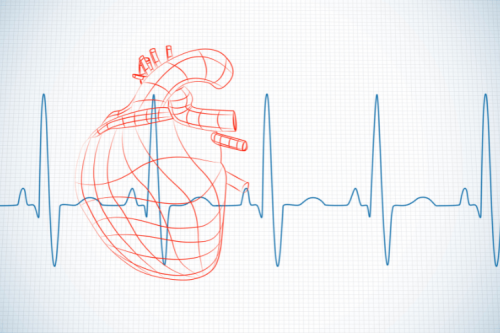



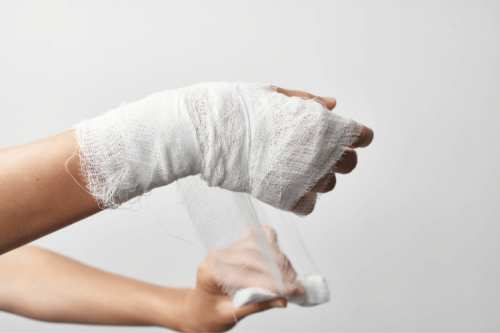
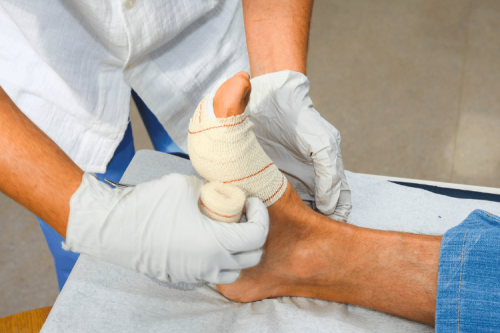
 Login with Google
Login with Google Login with Facebook
Login with Facebook